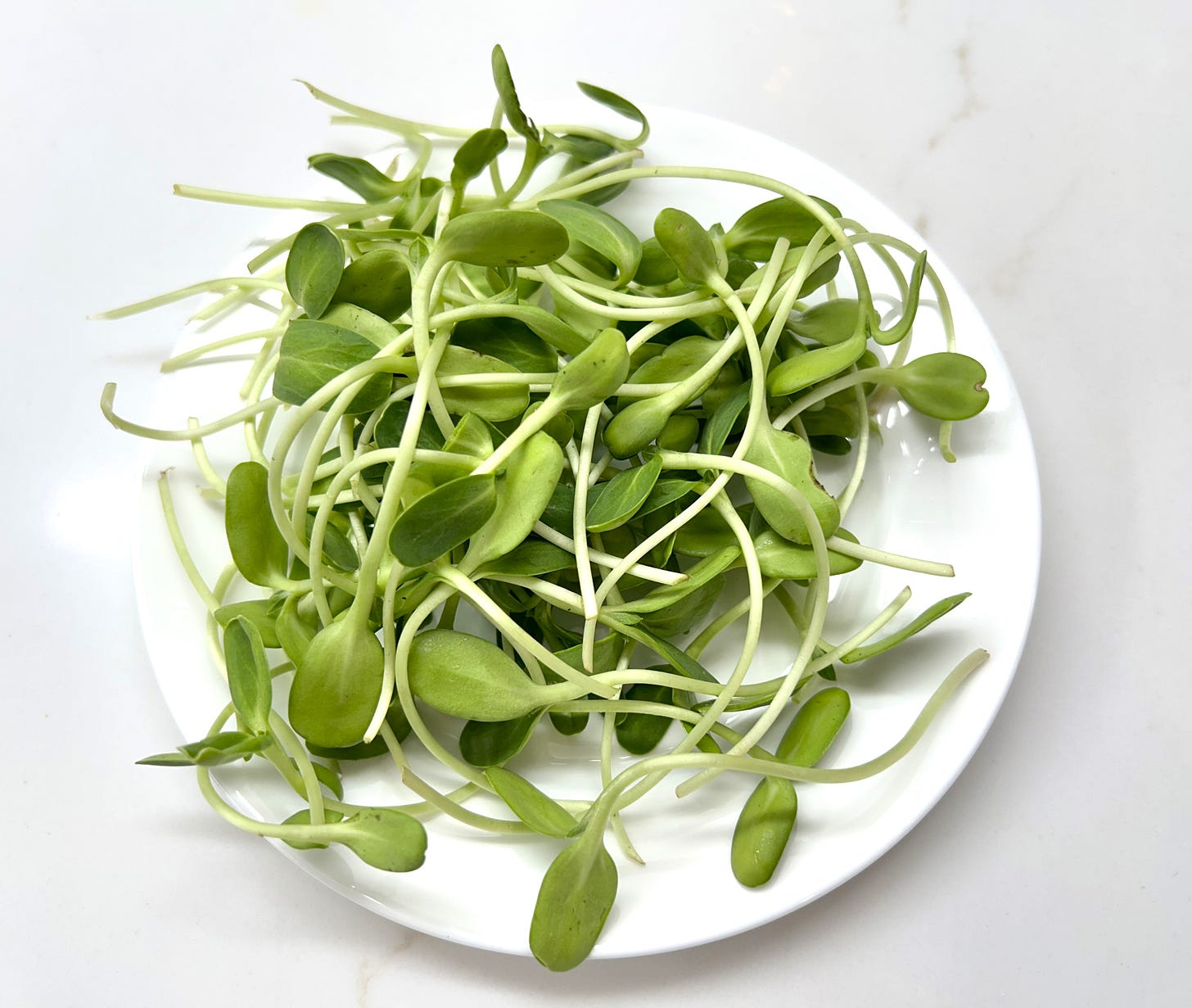Mighty Microgreens
What once was a novelty is now a growing trend. Are you incorporating this highly nutritious food into your meals?
In the last few years, I’ve noticed that there’s hardly a farmers’ market without at least one vendor offering fresh-cut or individually potted microgreens. Food trends show that microgreens are one of the fastest growing items and are appearing in many expected and creative ways. What once was a novelty only available in a few fine dining establishments, has now become much more accessible. In addition to farmers markets, microgreens can be found with regularity at co-ops, health food stores, and mainstream grocers. You may even be a part of the crowd who are growing them at home.
Different from “sprouts,” microgreens are amazing plants at the “seedling” stage. Their leaves and stems are more developed than sprouts, yet not as fully grown as a baby green.
Aside from being delicious, their compact size provides a fabulous nutritional punch - somewhere between 4 – 40 times the nutrient value of the full-grown plant. These nutrients help lower the risk of serious chronic diseases and support gut and brain health. According to studies and tests conducted by the US Department of Agriculture (USDA), the 14 most nutritious microgreens are:
Sunflower
Radish
Arugula
Broccoli
Beets
Kale
Cilantro
Basil
Chia
Clover
Buckwheat
Alfalfa
Amaranth
Mustard
WHY I LIKE THEM
Along with being incredibly fun to use, I am drawn to microgreens because they:
are aromatic, flavorful, and colorful, providing an essence and eye-catching finish to dishes
offer an awesome amount of nutrients when compared to their full-grown siblings
are a low- or no-prep way to increase the plant quotient in just about any meal
SELECT
Choose microgreens that look fresh, crisp, and vibrant in color. Avoid any that appear yellow or brown, wilting or rotting.
CLEAN AND STORE
Rinse microgreens in cool or lukewarm water. Give them a whirl in a salad spinner to thoroughly dry or gently pat them with a paper or cloth towel.
Store microgreens in a sealed container in the refrigerator. Add a lightly damp paper towel if starting to dry out.


USE
Microgreens are flavorful and often sweeter than their full-grown counterparts with the tender leaves and stems completely edible.
Add them to just about any entrée or side dish:
as a garnish for soups, stews, chili, pizza, pasta, egg dishes, casseroles, dips, and even desserts
as components in salads, sandwiches, and wraps, or blended into pesto and other fresh sauces, and smoothies
RESOURCES
For a deeper dive into the storage of microgreens, check out this post by Microgreens Corner - The 2 Best Ways to Store Microgreens After Harvest.
To try your hand at growing microgreens, look at:
How to Grow Microgreens: A Beginner’s 101 Guide from the Gardening Channel
A Step-By-Step Guide for Growing Microgreens at Home from Penn State
© 2024 Love + Craft Kitchen, LLC, All Rights Reserved







